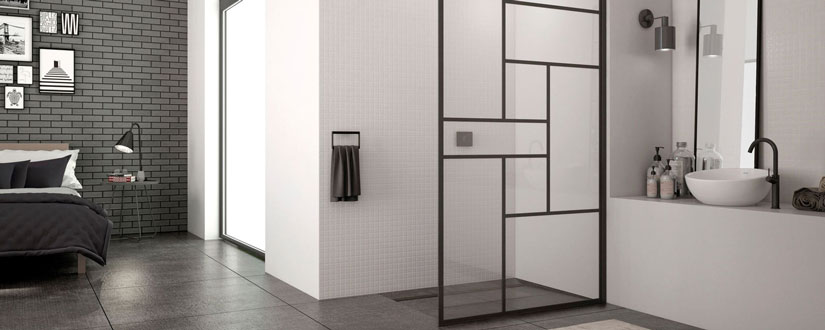
Ordering a glass shower screen for your bath or shower area is an on-trend alternative to hanging a shower curtain. Also, a screen may be ideal if you’re following universal design principals and creating a shower that’s easy for people of various ages and abilities to enter and exit conveniently. In fact, combining a shower screen with an open, zero-threshold entryway is great for both safety and accessibility. Whether your interest in a shower screen stems mostly from aesthetic considerations or practical preferences, read on to learn more about this product and how to tailor it to your unique situation.
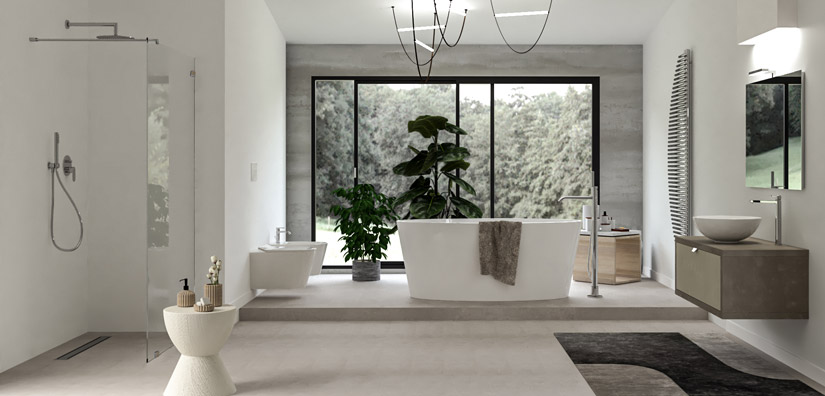
The term “shower screen” typically refers to a single glass panel used for water containment in a shower or bathtub. Modern shower screens are made of tempered glass for safety and durability. Tempered glass is heated and then suddenly cooled, a process that not only strengthens the glass but also makes it react differently if fractured. Instead of breaking into razor sharp pieces, tempered glass dissolves into little chunks that are less dangerous and easier to dispose of. Most importantly for shower applications, tempered glass is around 4 times stronger than annealed glass. A shower screen is strategically placed where it will block rogue water droplets while leaving on open entryway into the shower or tub. If a screen is added to a walk-in shower stall, additional features must be in place to ensure reliable water containment:
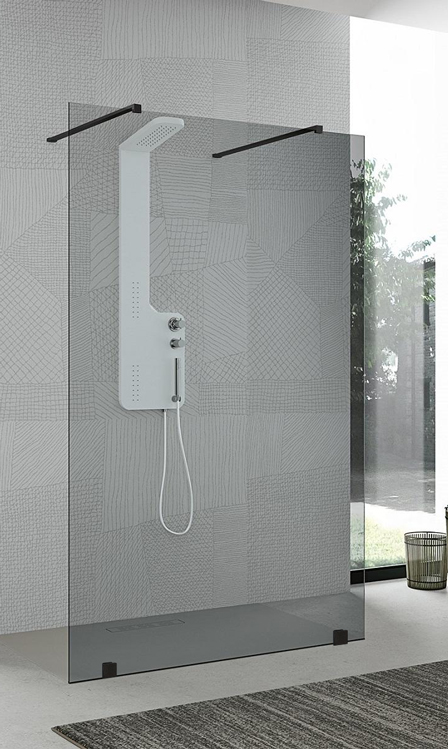
Yes and no. A shower screen always consists primarily of a square or rectangular piece of tempered glass. However, ABC Glass & Mirror offers a few different design options.
The choice between radius and square corners is primarily aesthetic. However, practical considerations come into play when deciding between a fixed or hinged screen. Reasons you may prefer a hinged screen include:

Your choice of glass style will very much define the look and feel of the shower screen for your bath area. A desire for a free-flowing bathroom ambiance is one reason homeowners may opt for a screen rather than a full enclosure or curtain. In these instances, clear glass is typically chosen to boost this effect. Here’s a closer look at the characteristics of clear glass and its alternatives:

Clear glass has the edge on the other options in every aspect except privacy, so let’s consider some FAQs about all 4 options.

Why is clear glass more popular than the other types of glass?

One of the most beloved characteristics of clear glass is its ability to visually join the shower area to the rest of the bathroom. Whether you are stationed inside the shower or elsewhere in the room, you will feel like you’re in a larger space, which is not the case if a curtain or privacy glass is used. Of equal importance is the fact that clear glass keeps the tile or marble inside the shower visible throughout the space. Finally, the flat exterior of this glass makes it easier to clean than textured glazing.

If clear glass is so stylish, why might I choose another option?

The desire for a private shower area is the main reason for choosing vision obscuring glass. A secluded shower offers practical benefits in a bathroom shared by siblings or used by guests. At the same time, you may prefer the appearance of patterned, frosted (acid-etched), or tinted glass for a particular bathroom décor scheme.

What are the characteristics of patterned, frosted, and tinted glass?

Each of these glass options provides privacy, but they all have a different appearance.

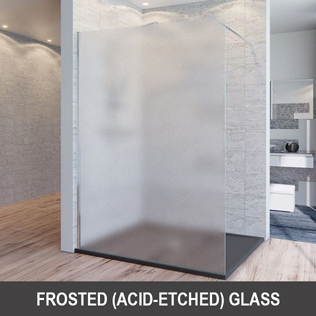
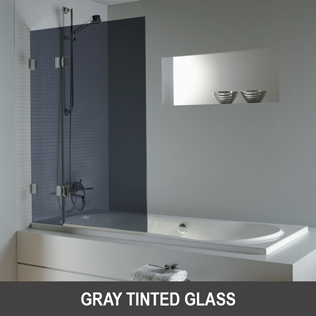
Frameless shower enclosures are made of heavy tempered glass, and aluminum framing is not used around the glass edges. In the case of a shower screen, a piece of unframed glass is attached to surrounding surfaces using clips or hinges (depending on whether you choose a stationary or operable screen). What is the appeal of a frameless shower screen for your bath or shower space?
In recent times, clear glass with black framing has also been surging in popularity – especially Grid style glass, which has black mullions as well as framing. Working with ABC Glass & Mirror, for example, you can choose a shower screen in one of the following styles:
A Grid style shower screen makes a gorgeous focal point for a bathroom! Since it includes clear glass, it still helps open up the ambiance and keeps the shower tile largely visible. However, the black framing and mullions give Gridscape glass lots of charm and character, while hearkening back to vintage steel framed windows of the past. Black framed glass pairs beautifully with just about any bathroom style, including farmhouse, vintage, maximalist, Scandi, grandmillenial, contemporary chic, and more.
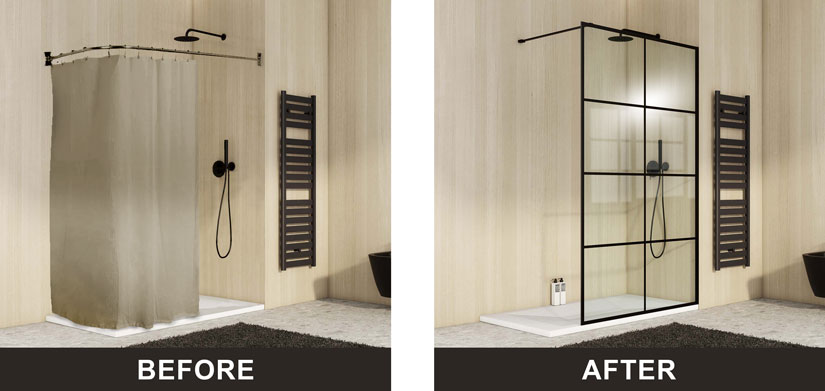
Shower screens can be added to bathtubs as well as shower stalls, making them a nice option for bathroom remodels as well as new construction. For instance, a bathtub and shower combo can be very functional, but it lacks the luxurious appearance of a soaker tub paired with a separate shower enclosure. However, you can style up an ordinary tub/shower combination by enclosing it with a glass screen rather than a curtain. Tub screens can be customized in regard to the glass style, corner style, and whether the panel is fixed or operable.
Likewise, screens work with shower-only stalls as well. A screen should be installed in front of the shower head, and it’s advisable to consult with a glass professional about the best width for your situation. You want to balance water containment with accessibility and visual appeal as you select shower screen dimensions. In summary, a shower screen is typically a viable option for:

If you want to use a shower screen rather than a full enclosure, certain elements of structure and design are recommended. Of course the glass screen will block many water droplets, but an open shower entrance may allow some moisture to escape from the stall. For optimal results, it’s best to:
In summary, be intentional in both your choice of shower enclosure and how you protect surrounding surfaces from water.
In terms of aesthetics, shower screens have a simple design that harmonizes with many bathroom styles. Frameless panels tend to have a more modern vibe, while Grid style screens can take on a contemporary OR vintage look depending on what they’re paired with. Another nice thing about shower glass is that it will continue to “match” even if you replace your towels, repaint the wall, change the floor color, etc.
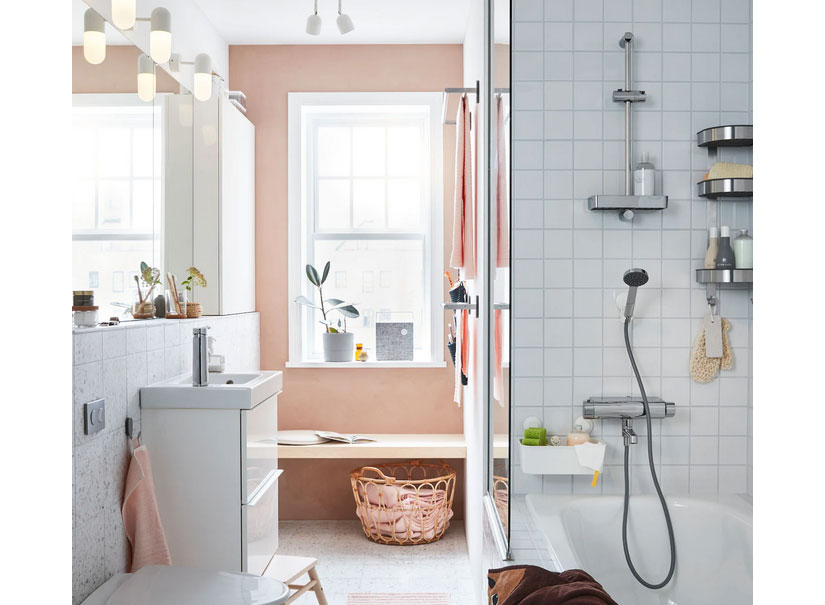
There are pros and cons to every water containment option for your shower or tub, so let’s take a closer look at curtains vs. glass screens.
Shower Curtain Pros:
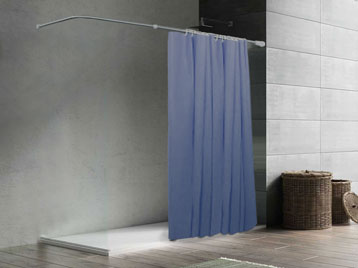
Shower Curtain Cons:
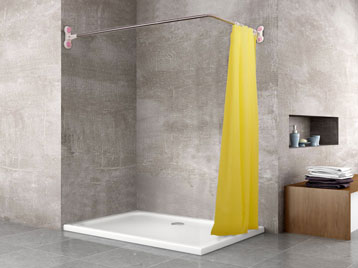
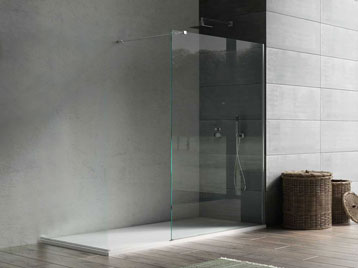
Glass Shower Screen Pros:
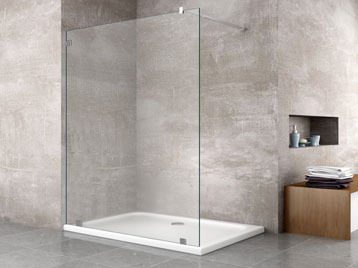
Glass Shower Screen Cons:
The first step in caring for any glass shower enclosure, including a screen for your bath or shower area, is ordering permanently protected glass. This glass is sealed or coated in such a way that it always stays clean longer and is easier to clean. Reapplication is never required.
Once the shower screen is installed it can be helpful to dry it after each use. Tap water is home to minerals and corrosive elements, and removing droplets promptly prevents buildup and damage to your glass. This may not be strictly necessary with protected glass (depending on the condition of your water), but it can’t hurt, and removing moisture improves the bathroom’s overall environment. To make it a quick and easy task, keep a squeegee or basket of absorbent towels handy.
When it comes to actually cleaning the shower screen, keep these tips in mind:
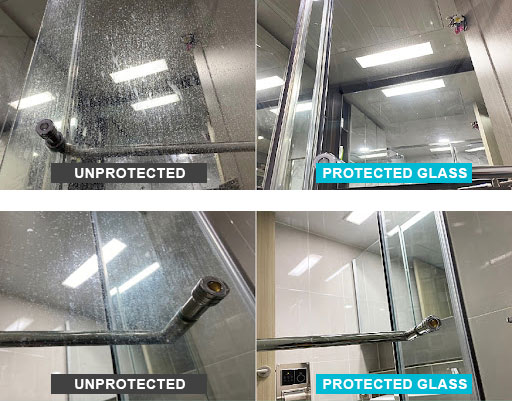
ABC Glass & Mirror supplies and installs a wide variety of glass and mirror creations – including shower screens for your bath or shower area – in the greater Northern Virginia region. We offer free in-home consultations, so the first step is calling us at (703)257-7150 or contacting us online. Once you’ve met with a glass expert and we’ve taken the needed measurements, the process typically looks like this:
If you’re renovating or having a new bathroom put in, ABC can help with other products as well.
We are veteran owned family company, and our priority is your satisfaction with the finished project. We invite you to call ABC at (703)257-7150 and learn more.
